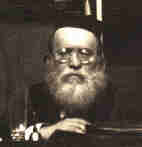 |
Hadrash Ve-Haiyunby the Reisha Rav, HaGoan Rav Aaron Levine Tz"lElucidated and Adapted by Efraim Levine |
 |
Hadrash Ve-Haiyunby the Reisha Rav, HaGoan Rav Aaron Levine Tz"lElucidated and Adapted by Efraim Levine |
Ki Sisa
Dedicated in honor of R' Tzvi Black
In honor of his outstanding work on behalf of
www.JewishAmerica.com
To Dedicate Please Contact Hadrash Ve-Haiyun
Hashem said to Moshe, "carve for yourself two tablets of stone like the first ones and I will inscribe on the tablets the words that were in the first tablets, which you shattered. (Shemos 34:1)
Commenting on the words "carve for yourself," the Gemara (Nedarim) derives that Hashem told Moshe that he may keep for himself the valuable dust of the tablets. This is derived form the word pisol. Simply translated, this word means carve. But pisol can also be rendered to mean "inferior leftovers." With this new interpretation, the posuk is saying that the inferior leftovers, i.e., the dust of the luchos are for you to keep. It was from this dust that Moshe attained a large fortune.
Following this line of reasoning, let us suggest another rendition for the word pisol. We can relate pisol to the word pasul (rejected or disqualified). What the posuk is saying then is that Hashem told Moshe that all the pisul, i.e., problems, complaints, and troubles are going to be connected to you. In other words, Hashem informed Moshe, the prototype for all future Jewish leaders, that when acting in the capacity of a leader he would be blamed for all the problems in the community. This also implies that he will also not get any credit for all the good and success. This will be attributed to other causes but not to him or his polices. The leaders will only be the target of criticism.
Taking this idea a bit further, let us note that the main difference between the first set of tablets and the second were precisely these two words "pisol lichah." Concerning the first set of tablets the posuk says that the tablets were the work of Hashem and the text was the text of Hashem. Concerning the second set of tablets however, only the text was from Hashem, but Moshe hewed the tablets himself. The command for Moshe to hew the tablets is our posuk here, "pisol lichah."
Let us suggest that the hollow letters of the tablets symbolize the spiritual essence of Torah, i.e., the practice and study of Torah. The tablets, i.e., the stone surrounding the hollow letters, represent the Torah environment. Just as it was necessary for the tablets to surround the hollow letters in order to give them shape, likewise it is impossible for one to attain spiritual accomplishments in Torah without an excellent Torah environment. It goes without saying that one must remove himself from the contamination of the world.
With regard to the first set of tablets, we received both the letters and the surrounding stone from Hashem. This represented the lifestyle Klal Yisroel experienced in the desert. There, not only did Hashem provide them with Torah and mitzvos, he also provided them with a rich Torah environment, i.e., surrounded by the clouds of glory, manna, isolation from the world of foreign influence. Unfortunately, with the sin of the gold calf, we lost the high level lifestyle that the first set of tablets represented. Even though the first set of tablets was replaced with the second set, the second set was not quite the same. Although the letters were again to be provided by Hashem, the stone was no longer provided by Hashem but by Moshe who symbolized the Jewish leader. This symbolized that the stone, which represented the vital Torah environment, was no longer guaranteed by Hashem but fell under the responsibility of the Jewish leaders. They were the ones now obligated to ensure that their communities be sheltered form the contamination of secular society. In addition, they are the ones now obligated to provide a positive environment for Torah fulfillment.
Let us now return to our posuk. From the words pisol lichah we have derived two teachings. First we are informed that the Jewish leaders are responsible for the Torah environment and second that they will be blamed for all troubles. It is no coincidence that the two teachings are derived from the very same source; they are strongly related. Until now the role of the leaders were reserved solely for guidance in spiritual matters such as the study of Torah and performance of mitzvos. But now their role expanded to include responsibility for the environment as well. Therefore, it is precisely here in this posuk that they are informed that they will be blamed because it here that they are informed that it is now their responsibility.